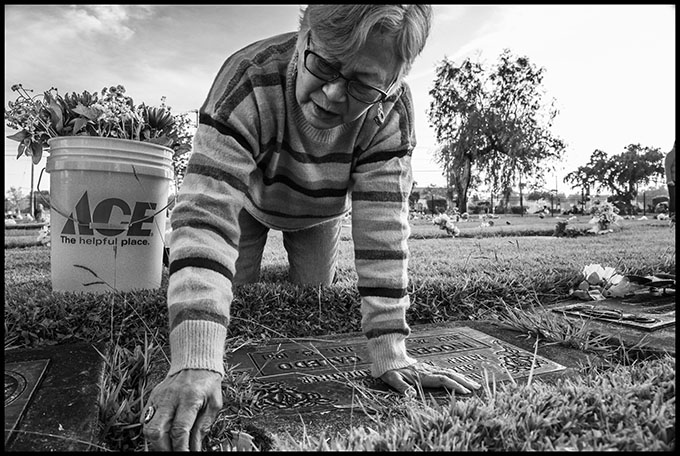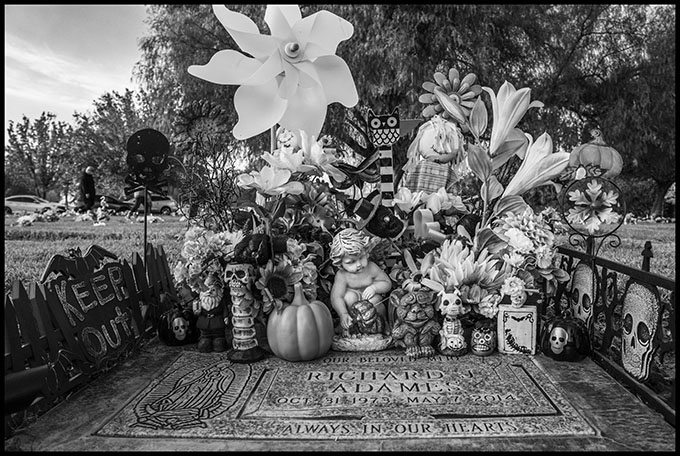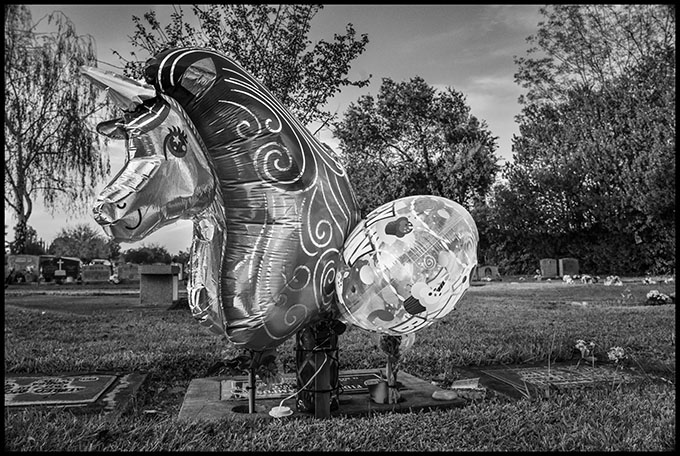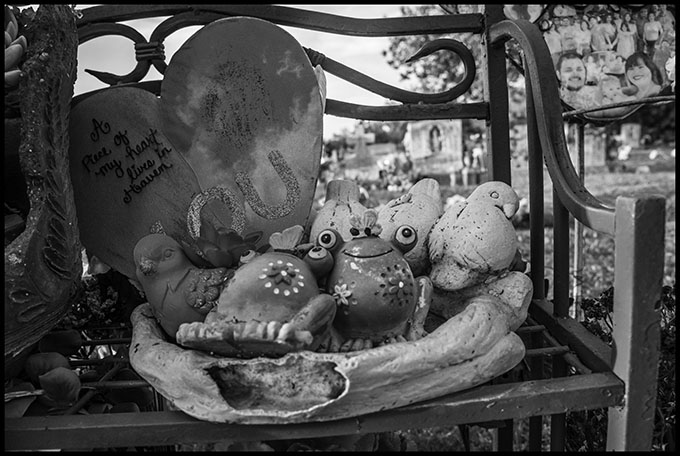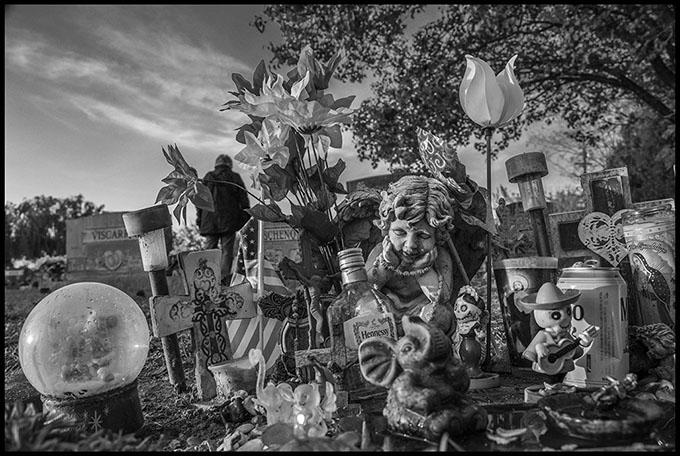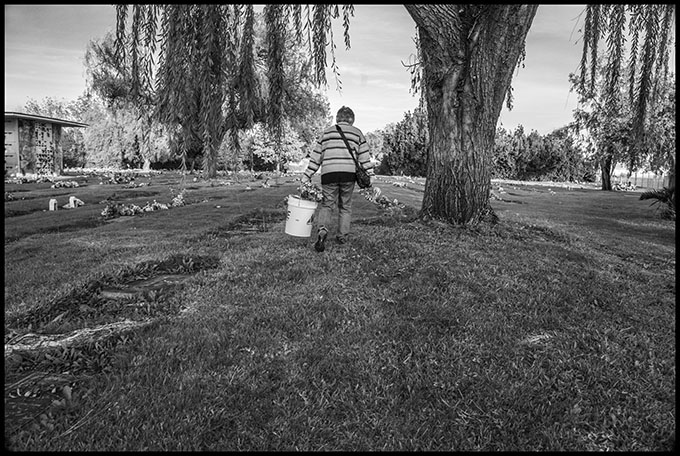Thanksgiving in the Stockton Graveyard
By David Bacon
If you drive straight ahead after passing through the cemetery gate, you soon find yourself among dark stone mausoleums. These are the grey memorials to Stockton’s Catholic elite. Along empty tree-lined avenues leaves blow past the stones and their shadows.
If you turn right, though, you arrive at the corner of the graveyard where Mexicans and Filipinos bury their dead. Innocencio Galedo, who migrated to work in Stockton fields in 1922, is buried here. Next to him is his wife Sotera, who joined him from the Philippines after the war. Once a year one of their kids cleans off the two flat grave markers – picking away the crabgrass and putting flowers in the two holes in each stone slab. This year it’s Lillian’s turn.
On Thanksgiving the graves in this corner are a bewildering cacophony. Many families visit them as a part of the holidays. November comes just after Dia de los Muertos, and grave decorations are a jarring combination of pumpkins, skulls and babies. Plastic flowers combine with real ones. Votive candles bear the image of the Virgin of Guadalupe. A small statue, at first glance a dusky figure from a surreal dream, resolves into a chubby infant holding a bird.
Against the fence at the edge of the cemetery, with warehouses visible through the slats, birthday balloons are the memorials left by families who can’t afford elaborate gravestones. Where the children are buried, dolls sit next to little figurines of elephants or cartoon characters, under photographs of smiling sisters and brothers. The little pony, beloved by six-year olds, has become a blown-up metallic unicorn.
After putting her decorations on the flat gravestone in front of her, a girl sits remembering who’s buried underneath. In one large photograph a father stares out from the past. Other families, unwilling to forget the faces of their buried dead, have set small portraits into the stones.
Many tomb decorations celebrate life, as though the person in the ground is still there to party. A bottle of brandy and a beer, a calacas with a guitar, and even a snow globe, surround a flag, two candles with saints, and the statue of a strangely pensive child. It’s an altar for Day of the Dead, in the campo santo, or the holy field that belongs to them.
Walking away, I notice a new burial. An enormous flower decoration spells out DAD – another father receiving his family’s tribute. People say funerals and burial arrangements are for the living, not the dead. The dead, after all, don’t live to enjoy them. But if they somehow were able to see what’s come after they’re gone, those buried under the flat stones and balloons are probably happier than the respectable folks in their grey mausoleums.
…
Photographs Copyright David Bacon
